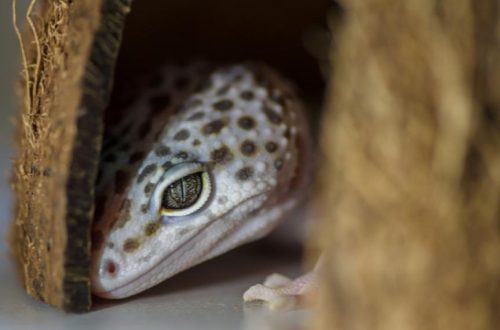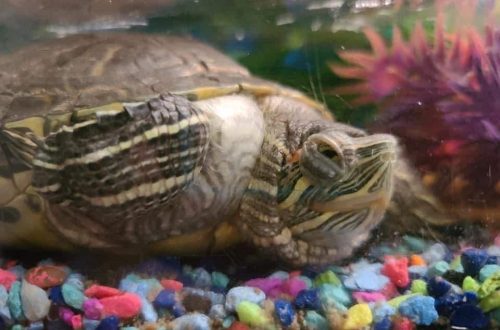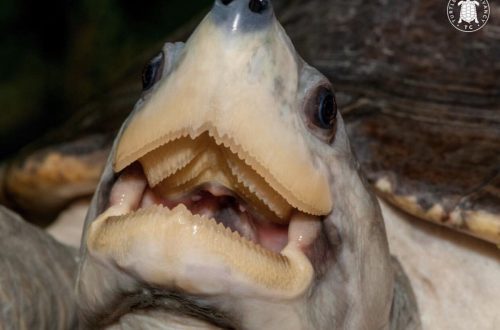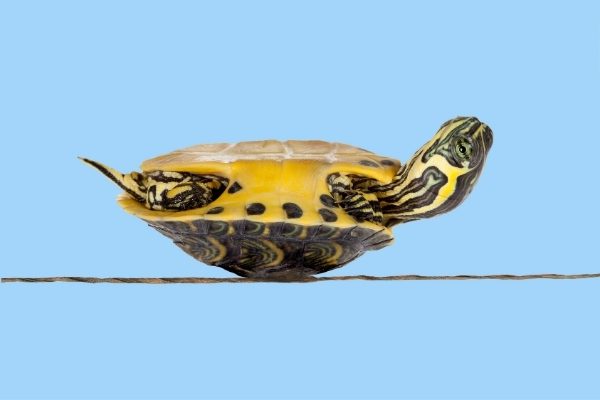
Raudonųjų ausų ir vėžlių pneumonija: simptomai ir gydymas namuose
Turtles are known as the most unpretentious and disease-resistant pets, especially when compared to other pets. But the common cold poses a great danger to them, which in reptiles rapidly turns into one of the most serious complications – pneumonia. At risk are not only aquatic, but also land species of turtles.
Turinys
Ligos ypatybės
Improper conditions lead to the development of the disease. Lack of food and vitamins weakens the reptile’s immunity, and too low a temperature in the terrarium activates the activity of bacteria. There are three different types of the disease:
- Exudative – wet pneumonia, also called the 1st stage, proceeds in an acute form, often accompanied by visible discharge from the nose and mouth, but can also occur without symptoms; with rapid development, death may occur in a few days;
- Purulent (dry) – often becomes a complication (stage 2 of the disease), but sometimes develops on its own; visible symptoms of pneumonia are also often absent, the disease has a long development, the animal gradually noticeably weakens and loses weight;
- Mycotic – develops in land species of turtles against the background of exhaustion of the body, when kept in a room with high humidity; This type of disease does not respond well to drug therapy.
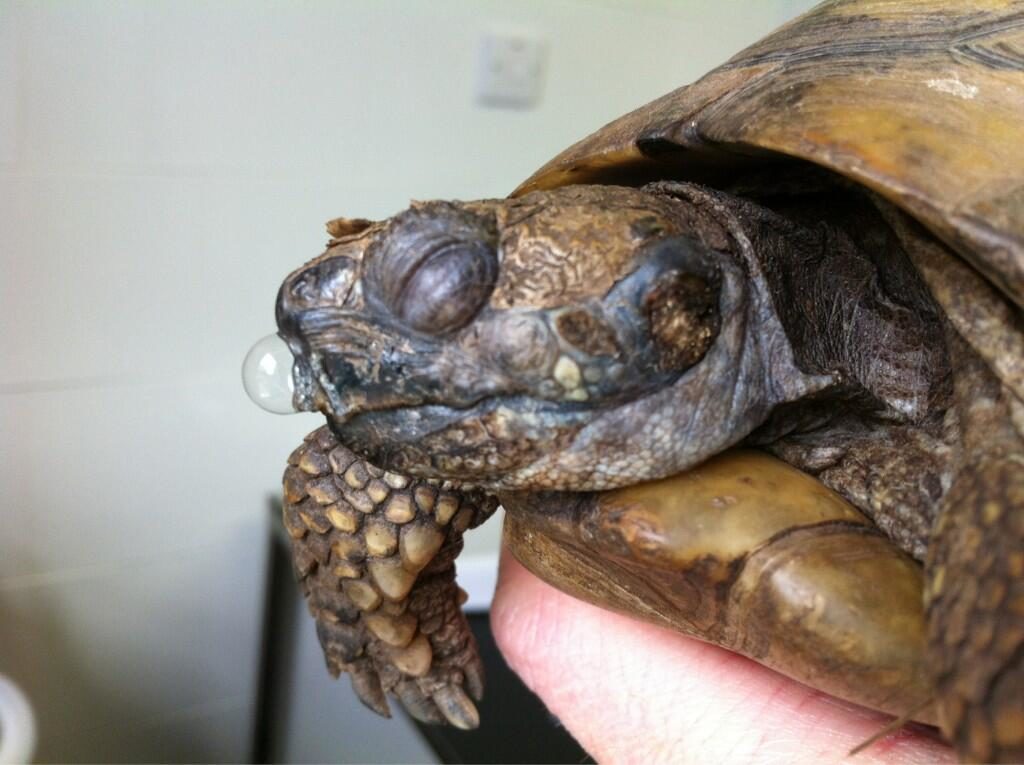
Signs of pneumonia may appear in various combinations or be completely absent in the initial stages of the disease.
Be sure to pay attention to the condition of the animal is necessary for the following symptoms:
- lethargy, lack of activity, prolonged sleep;
- loss of appetite or complete refusal of food;
- wheezing, whistling, other breathing sounds;
- discharge from the nose and mouth;
- difficulty breathing, attempts to breathe through an open mouth.
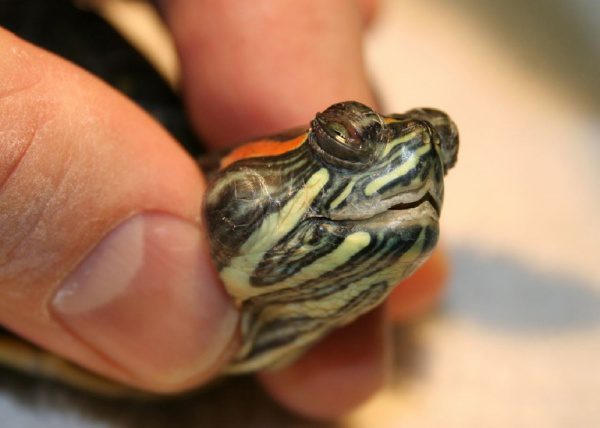
Pneumonia in the red-eared turtle is determined, among other things, by behavior in the water – the accumulation of mucus in the lungs makes the animal take a skewed position, the turtle often cannot completely submerge under water. But these signs can also be symptoms of gastrointestinal diseases, in which accumulations of gas in the intestines cause the shell to skew when swimming.
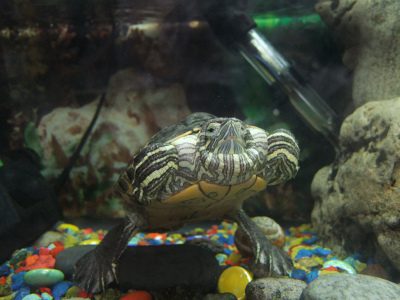
Terapijos
Pneumonia in a turtle is often detected in the later stages, so home treatment will be ineffective. It is best to contact your veterinarian as soon as possible to take an x-ray and determine the extent of lung damage. The doctor will conduct the necessary tests and, based on them, select a course of antibiotics.
IMPORTANT: You cannot treat a turtle with medicines on your own, especially if you have no experience with reptiles. Conventional pet medications will in most cases be deadly to the turtle. This is explained by a significant difference in physiology – many pathogenic bacteria for warm-blooded bacteria are part of the normal microflora for reptiles.
Most often, the antibiotic Baytril 2,5% or its analogue Amikacin is prescribed for treatment. The therapy is carried out with the help of intramuscular injections – in the front, hind legs or the area next to the tail. Before the injection, it is enough to wipe the skin with clean water – alcohol causes burns in reptiles, so it cannot be used. After the injection, the needle should be removed by gently pressing on the skin to reduce pain. Then you need to massage the injection site for at least a minute – so the medicine is absorbed faster.
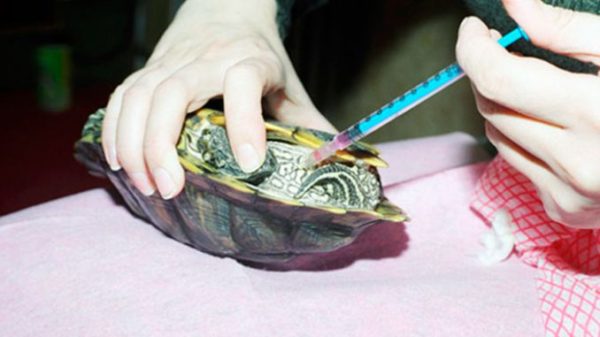
External symptoms of the disease may disappear after the first injection, but it is necessary to complete the course of injections prescribed by the veterinarian. If the symptoms do not disappear after 2-4 days, you need to prescribe another drug. Additional procedures and measures to improve the conditions of detention will help cure the turtle from pneumonia:
- maintain the temperature in the terrarium at 28-32 degrees;
- regularly use an ultraviolet lamp;
- eliminate contamination of soil, water, clean more often;
- improve nutrition, be sure to give vitamin supplements.
In the first days of treatment, the turtle may refuse food, so a 5% glucose solution or a Ringer-Locke solution is prescribed. Liquids are injected with a needle into the intestinal area, where they are rapidly absorbed.
Fitoterapija
The treatment of pneumonia in tortoises is the same, but in order to replenish fluids, they need to take warm baths with brewed chamomile. To make a decoction, pour 2 tablespoons of dry chamomile with hot water, leave to infuse for half an hour. The resulting liquid is diluted with warm water in a ratio of 1 to 3, after which you need to put the pet there for 30 minutes.
It is important to ensure that the bath does not cool down – it is better to place it under a lamp or near a heater. After the end of the procedure, the pet is wiped with a soft cloth or napkins, planted in a heated terrarium. Regular baths eliminate the risk of dehydration, and the antibacterial properties of chamomile help the body fight infection. Chamomile decoction can be added to the water turtle directly into the water of the terrarium.
Recovery after illness, prevention of complications
Successful healing can take several weeks, and the recovery of the pet will take another month. To prevent the return of the disease, you must carefully monitor the conditions of the turtle:
- the terrarium must match the size of the animal;
- the soil must be regularly replaced or washed, change the water in time;
- install incandescent lamps, UV lamp, water heater;
- the terrarium should be located away from drafts, sources of noise;
- in the summer, you need to take the turtle out into the sun (reptiles quickly overheat, so a shaded shelter is required).
The main danger to the immune system is malnutrition, exhaustion, vitamin deficiency. Therefore, it is important to use additional dressings that make up for the lack of nutrients and vitamins. Compliance with all conditions of proper maintenance will strengthen the pet’s immunity, help it recover faster.
Signs of death
It is often possible to detect pneumonia only at a late stage, when therapy no longer has an effective effect and the pet dies. Distinguishing death from hibernation is quite difficult, and special tools are needed to listen to the turtle’s heart through the shell. The following signs will help determine the state of death:
- the head and paws are not drawn into the shell, but hang freely;
- pale, bluish color of mucous membranes – tongue, oral cavity;
- lack of respiratory movements of the larynx with an open mouth;
- lack of eyelid reaction to touching the eye;
- the appearance of a specific smell if death occurred more than a day ago.
Sometimes the disease occurs without symptoms, so the owners do not even know what their pet died of. It is impossible to determine the signs of death from pneumonia outwardly, but the doctor can conduct an examination, take an x-ray to see if the lungs were affected.
How to identify and treat pneumonia in turtles
2 (40%) 1 balsuoti



